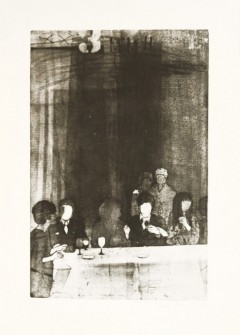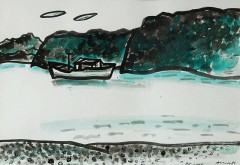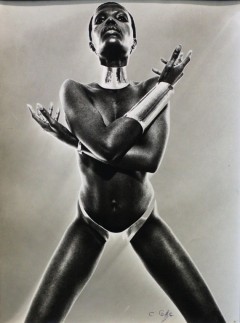A girl with a glass ball
020140 Otto HERBIG [1889 - 1971]
A girl with glass ball, 1927
charcoal, crayon, watercolor /paper
dim. 61,5 x 48 cm
signed. l.b.
Otto Herbig [1889 r. Dorndorf - 1971 Weilheim] - German artist, considered to be one of the torchbearers of the German Expressionism.
In the years 1909-1911 Herbig studied at the Academy of Fine Arts in Munich, where he was introduced to Expressionism. In 1912-13 he studied in Weimar, where he met expressionists Rodlof Wacker, Otto Pankok and Gert Wollheim.
1913 turned to be crucial for young artist and his work, at that time he got to know Ernst Penzoldt, famous German sculptor. They traveled together and when Herbig settled down in Berlin they stayed in touch. This relationship was of a great significance for Herbig’s style and further work.
During the First World War Herbig joined the army, he stationed in Ostend, where he met James Ensor. War experience strongly influenced his work at that time, it can be seen for example, in his lithographic works, which were published as “Die Schaffenden”.
Herbig got married just after the war in 1919. His works from this period can be described as full of warmth and focused on the relation between mother and child. “Kissing mother” (1923) and “Mother and Child (1924) are some of the noteworthy artworks from this time.
A few years later Herbig had to face a big trauma. In 1926 his wife has died, and two years later Herbig lost also his son, Tyl. Herbig’s personal struggle can be seen in his works, which became more subtle and full of emotions.
In the years 1928- 1958 Herbig has traveled to Italy, in 1929 he joined Italian artistic group in Villa Massimo (Rome). He also made contact with artists from the famous German group Die Brücke, which he joined later.
During the Second World War, Herbig’s art, just like the works of other modernists, was considered to be “degenerate art” and was banned. After the war Herbig worked as a teacher in Art School in Weimar.
He spent last years of his life in Weilheim where he died in 1971. His works are appreciated by various art galleries in Germany, such as National Gallery East Berlin.
source: Labedzki, A., The Frontrunner of "German Expressionism", 2009















